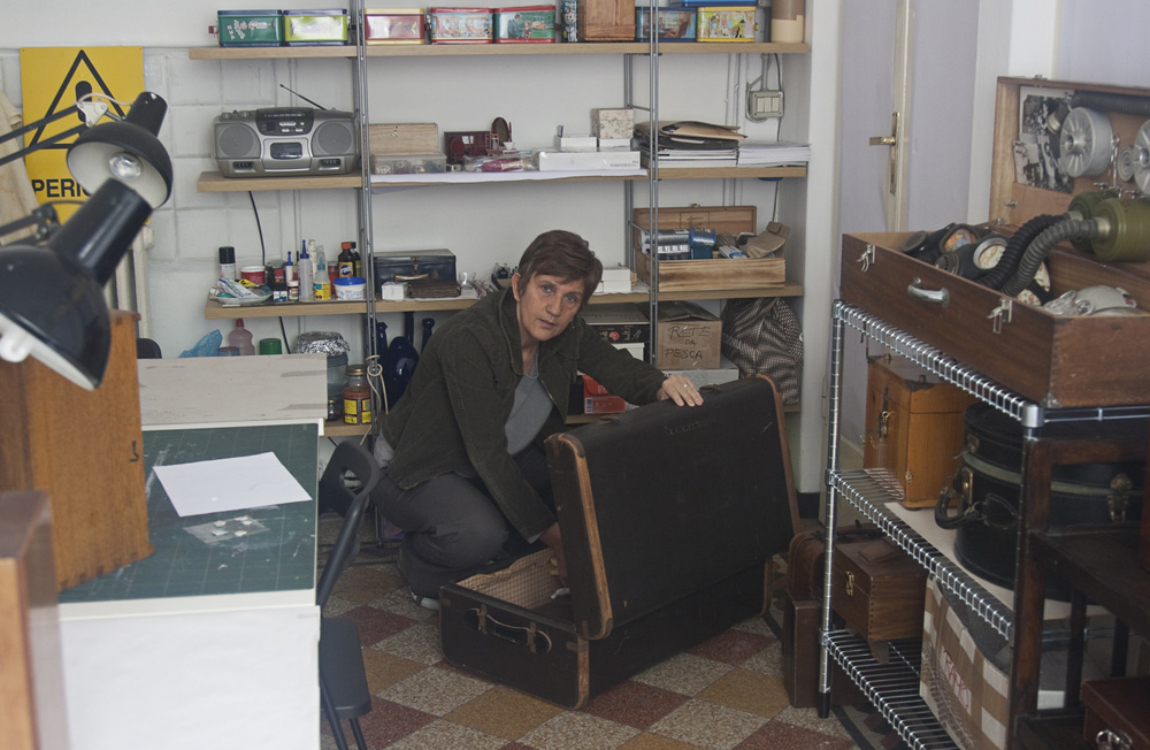Room 22
It is finally June. With summer everything looks bright. My eyes are magnifying glasses; light, colours, flowers, scents, things, people, friends, they make me feel good. This project collects all these emotions in a “sowing and constellation” of colour. Hurray!
Davide Nido
No complacency, no concession to skill, no relaxation. The knots are not the refined and numerous ones of silk, the tones are not caressing and selected, but the result is effective. And Nido’s work is precisely in the name of effectiveness. The question he raises is simple and definitive: given a small number of elements, which allow a limited combinatorial calculation, to obtain results that contrast the successes of the digital, technological, advertising and splatter image. Again: starting from the minimum, in terms of raw material, to achieve the maximum, in terms of aesthetic and emotional impact. It is a definitive question because, on whether or not it is resolved, depends the very meaning of art in the age of the reproducibility and technical simulation of everything, even life. Nido’s work is a hope. Also because he paints without painting. Davide Nido stands out in the contemporary scene for his isolation, for the uniqueness of his research. If you want to catalogue his work, you necessarily have to proceed by exclusion. It is not classical abstractionism […] because the interest in colour is secondary and consequent with respect to that in matter, because the “body” of the work is too present to leave room for a discourse on monochromy, on hatching, on shading; it is not informal […] because there is never any complacency of gesture, and the construction is serial and ordered rather than free and impetuous, even when he chooses to act quickly and under the influence of chance. It is not informal […] because there is never any complacency about gestures, and the construction is serial and ordered rather than free and impetuous, even when it chooses to act quickly and under the influence of chance; it is not optical, since the artist does not want to confuse perceptions but to concentrate on the texture of the work, and uses the interwoven threads and smears to nail the image to the support, and not to create a perennial movement; it is not new figuration because it does not feel curiosity for the body, and prefers to proceed by hiding and erasing the figure rather than seeking it out. The artist always uses the same element, hot glue, fired onto the boards or canvases by special heat guns, to rethink the formal achievements of contemporary research, to experiment whether or not they are compatible with the use of a different, alternative, industrial, futuristic material. He does not do this scientifically, it is not a propositional and directed investigation. He acts on instinct, where he sees possibilities for movement, driven by the desire to explore, to challenge a limit. Or rather, two limits: that of the instrument, glue, never before considered an expressive medium, and that of painting. Paradoxically, Nido is a painter, and a very conservative one. He does not use oil, acrylic or tempera, except for backgrounds, but his obsessions are those of a painter: conquering space, simulating a volume, creating a thickness, interpreting a colour, condensing a story into an image, into a flash.
Maurizio Sciaccaluga
Davide Nido (Milan, 1966 – 2014). In 1993 he had his first solo exhibition at Galleria Eos in Milan. In 1994 he exhibited at the Mellauer Werkstatt Gallerie in Vienna, and in 1995 and 1998 in Genoa: at Galleria Leopardi V Idea and Galleria Andrea Ciani. In 2001 he had three personal exhibitions: Sognare at Spazio Obraz in Milan, Folle in una notte di Primavera (with Federico Guida) at Galleria Roberta Lietti in Como and Roarangiaroncelindavio at Galleria Paolo Majorana in Brescia. In 2003 he exhibited at the Palazzo del Broletto in Como, in 2004 at the Galleria Bonelli Arte Contemporanea in Mantua and in 2005 at the Galleria Carloni Spazioarte in Frankfurt. In 2006 he had a solo show at Galleria Blu in Milan and at Galleria Bonanno Arte Contemporanea in Trento. In 2007 the Gianna Sistu Gallery in Paris hosted the Davide Nido exhibition and in 2008 the Bonelli Arte Contemporanea Gallery in Los Angeles presented Spider Man. He exhibited at the Palazzo Reale in Milan in 2007 and at the Palazzo delle Esposizioni in Rome in 2008. In 2009 he took part in the 53rd edition of the Biennale di Venezia exhibiting three works in the Italian Pavilion. In 2009 Davide Nido – Onda Frattale was held at Galleria Roberta Lietti in Como and A Campus Point at Politecnico di Lecco.






































































